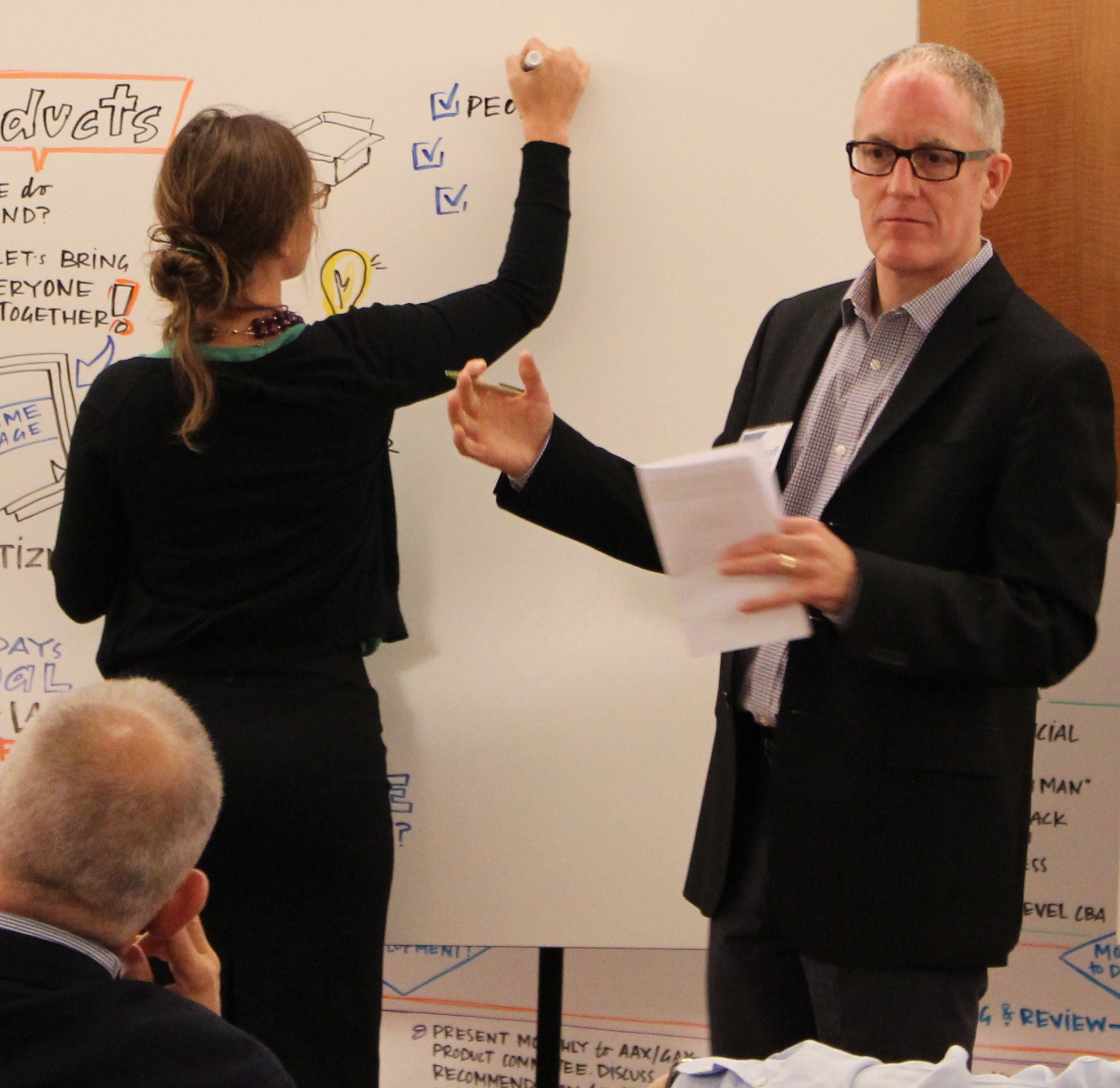Collective Next turns 10 this year. This is the first of a series of posts in which people at the company share what they’ve learned about helping companies come together, think better, and move forward over the past decade.
“Collaboration,” Geoff Amidei says, “is like a golf swing. It’s not intuitive, not natural. The simple act of not caring who owns an idea: for most business people, that’s not a natural act.”
Geoff Amidei is a senior principal and solution designer at Collective Next; he’s been here since 2006 and he’s worked in collaborative design and facilitation since 1997 (he started, as many others here did, at Ernst & Young’s Accelerated Solutions Environment). “For collaboration to really work,” he says, “it needs to be intentional. And part of being intentional is allowing for the messiness of collaboration, while retaining some control and providing a framework for the chaos. The best collaboration is not something that happens by accident, and it’s not easy. It requires a set of conditions that don’t necessarily occur naturally in most organizations. It’s got to be intentional.”
How do companies make collaboration more intentional?
“By creating an experience. Part of creating a good collaboration is creating a vessel to contain the collaboration, the space in which it can happen. You must pay attention to content, make sure you’ve identified the business problem and have what you need to be able to answer the important questions. When you create an experience, you should think about what will make this, at the least, engaging and, at the most, an inspirational, transformative experience.
But planning an effective meeting with the right agenda and content is an excellent beginning — but then you have to make sure that your plans don’t get in the way of everyone in the meeting talking to each other in a productive, working way.
What do you need to know about the members of a group in advance to make the experience as peak as possible?
As a facilitator, you might not need to know a lot about the individual participants coming in the room. You do need to know what success means to that group, or at least to the sponsors of that group, and be able to speak in the language of the group. You have to be able to understand what’s important, or what they think is important. That way, you can be sure you’re fixed on the right thing that has to be reported out.”
What have you learned about collaboration while at Collective Next?
I’ve learned that collaboration is not a suitable solution for every problem. Collaboration does require a tolerance of inefficiency, a tolerance of emotion being involved as you get work done. You need to be able to manage people’s irritation and stress. In the moment, collaboration can feel inefficient and chaotic. It’s hard. You can’t necessarily just plow through an agenda and check the box on each item and move on, which high-performance companies wrestle with.
One important thing I’ve learned is that collaboration is defined by the output, not necessarily the process. Working together is one thing. But have a diverse group of people come meaningfully to something they couldn’t have come to without being part of a group: that’s true collaboration. It’s creating something of value that might not have existed otherwise.”





